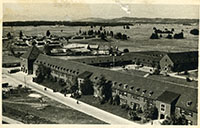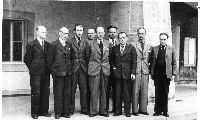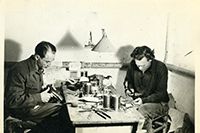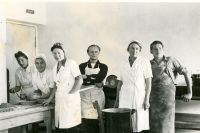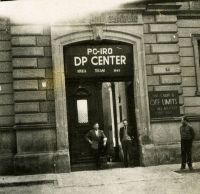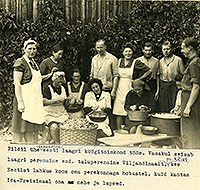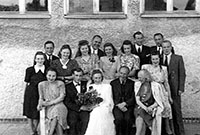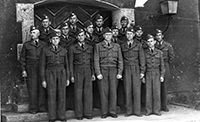DP camps in Germany
If we can estimate the number of Estonians in Germany in the autumn of 1944 at 40,000, then according to UNRRA statistics, in October of 1946 there were 31,241 Estonians. Of these, 16,688 (53%) were located in the American zone, 13,698 (43%) in the British zone, and 855 (4%) in the French zone. The data above does not contain at least a few thousand Estonians who were outside of UNRRA camps, or troops that were still in prisoner of war camps at this time. Up to 10,000 Estonians could have been living outside of DP camps.
Most of the DP camps were founded from the spring of 1945 until the end of the year. Multinational camps inhabited by Estonians, Latvians, and Lithuanians, along with some Poles, Ukrainians, and other ethnic groups were the most common. In 1945, in the three occupied zones in western countries there were Estonians in over 150 different camps.
Close to 19,000 Estonians lived in the US zone by the end of 1945, in at least 80 different areas, though concentrated mainly in Bavaria. Estonians dominated the US camp zones of Kleinheubach, Altenstadt, and Fürth, as well as some other smaller camps. Close to 4000, the largest number of Estonians, lived in Geislingen, and it consisted of Estonian DPs only. There was a large number of Estonians in Hochfeld (1700), where there were just as many Latvians (1800), and only slightly less Lithuanians (1200). There were camps that were only inhabited by Estonians in Dettendorf, Ingolstadt, Neuburg, Ulm, Wielandshag, and Wiesbaden.
Estonians were located in the British zones of more than 80 camps in 1945, which included the Schleswig-Holstein, Hannover-Braunschweig, Oldenburg, and North Rhineland-Westphalia regions. Lübeck was a major centre for Estonians in the British zone; seven camps were built for nearly 2000 Estonians. The largest camp in the British zone, and the second most important centre for Estonians was Schwarzenbek, where 748 people lived in August 1945.
There were about 2000 Estonians in the French zone in the spring of 1945, but that number soon fell under 1000, and at the end of the year there were only around 800 people. Estonians lived only in camps in Kaiserslautern, Freiburg and Müllheim; a large part of the Estonians in the French zone lived in private apartments and received help from the military or from the UNRRA.
Estonians assembled international committees and central organisations, choirs, folk groups and drama clubs in the camps; they distributed their own newspapers, ran schools, kindergartens, boy and girl scouts groups, and organised concerts, exhibitions, and sporting events. The most active period in the camps lasted from the summer of 1945 to the autumn of 1947, when the emigration from Germany began, peaking at 1949–50. Most of the camps ceased operation in 1951.
| An example camp of UNRRA in Altenstadt, probably in 1947. VEMU FK.61-6 |
|
| A leadership of DP camp in Altenstadt, probably in 1947. VEMU FK.61-7 |
|
| Shoemakers of DP camp in Altenstadt, probably in 1947. VEMU FK.61-8 |
|
| Cooks and assistants of a DP camp, probably in 1945. VEMU FK.61-14 |
|
| Gymnasts performing in a DP camp in the British zone in 1945. VEMU FK.61-24 |
|
| Entrance(?) to DP camp in Amberg, probably in 1945. VEMU FK.61-33 |
|
| A kitchen team in one of the DP camps in Germany, undated. Lady on the left, Mrs. Kõivo, escaped from Estonia together with her family by horse but lost her husband and children in East-Prussia. VEMU FK.61-52 |
|
| Weddings in Amberg camp, June 1948. VEMU FK.61-57 |
|
| Estonians in the police service of Altenstadt camp in 1946. VEMU FK.61-126 |
